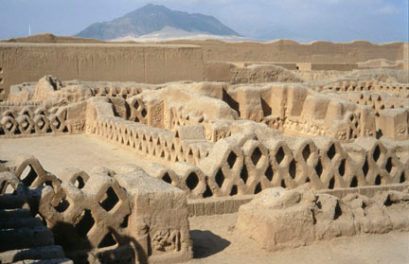The protection of cultural heritage in conflict zones has been urgently discussed by the international community for the past decade. The targeted destruction of monuments and sites has been likened to “cultural cleansing,” suggesting that the defense of heritage may be inseparable from the defense of human lives.
Destruction of monuments erases history and causes irreparable harm to the cultural and religious identities of people around the world. Yet despite important resolutions, conventions, and educational campaigns, international public policy that protects cultural heritage has yet to be created.
In 2016 the Getty launched a series, the J. Paul Getty Trust Occasional Papers in Cultural Heritage Policy, to provide a forum for discussion on this issue. Contributed by noted experts, the papers are intended to inform efforts by cultural organizations and the international community to protect the treasured sites, buildings, and objects that are so integral both to cultures around the globe and to our shared human history.
Does the World Community Have a Responsibility to Protect Culture?
The first two papers in the series focus on the connection between the destruction of cultural heritage and atrocity crimes such as genocide.
The first paper highlights the connection between cultural cleansing and mass atrocities. The authors propose that the framework known as the Responsibility to Protect (R2P)—a global commitment adopted by the UN to prevent genocide, war crimes, ethnic cleansing, and crimes against humanity—can be used for cultural heritage as well. This would sanction the international community to act, with military force if needed, to protect cultural heritage.
The second paper examines how the international community has historically defined attacks on cultural heritage. The author argues that framing these attacks as cultural genocide could recast the debate and encourage governments to unite to protect everyone’s heritage.
Both papers contend that the connection between atrocity crimes and attacks on cultural heritage should prompt the international community to establish protocols to safeguard heritage.
Is It Moral to Protect Heritage with Force?
In the new entry in the series, philosophers Helen Frowe and Derek Matravers take a different view. They assert that we must carefully consider the morality of using military force to protect cultural heritage—because armed intervention will inevitably result in serious harm and death.
One of the leading arguments for the defense of cultural heritage is that there is a direct link between genocide and the destruction of cultural heritage. Protecting cultural heritage, therefore, may prevent or deter genocide.
Frowe and Matravers question this argument. They point out that some attacks on cultural heritage precede genocidal campaigns, while others have no murderous intent. This was the case, for example, with protesters’ defacement of Cecil Rhodes statues in South Africa. Attacks on objects and sites are therefore not a reliable predictor of harm to people.
The authors also challenge the idea that heritage should be defended for its own sake. They strongly disagree that the international community should defend heritage with the same emergency protocols and formal protections used to defend people’s lives.
Although the authors of the latest paper do not offer an alternative solution for protecting heritage under threat, they do provide a cautionary, thought-provoking critique. Future papers will continue to engage with this problem, offering additional perspectives on protecting cultural heritage in conflict zones.
You can find all three papers available for free download here; the latest paper is available in web, PDF, and ebook formats.





Comments on this post are now closed.